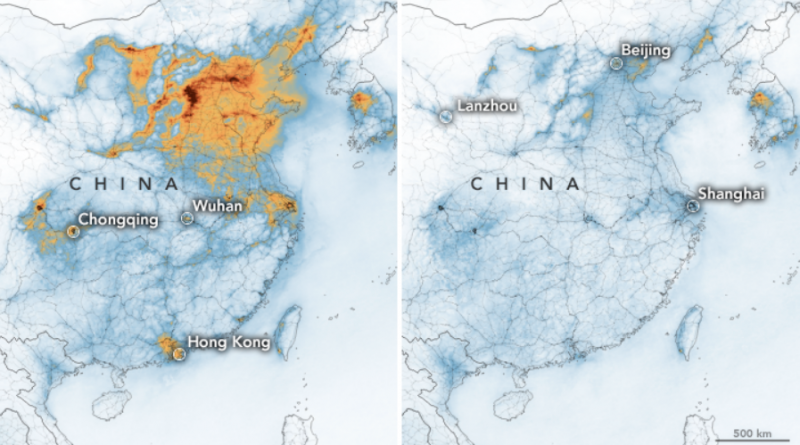China’s air pollution dropped dramatically after coronavirus lockdown
China’s lockdown in order to curtail the spread of the novel coronavirus has had one unexpected side-effect – a sustained drop in air pollution.
NASA stated on Saturday that it had seen “significant decreases” in noxious nitrogen dioxide over China through February. Nitrogen dioxide is emitted by burning fuel, cars, power plants, and construction machinery, and it can aggravate respiratory symptoms and asthma, among other negative effects.
China’s cities rank among the most polluted in the world, with Hotan and Kashgar in the top 20 according to an IQAir report.
NASA published satellite imagery on Saturday, which you can see above, showing nitrogen dioxide levels in China before and after the country began imposing lockdowns on 23 January.
It also showed drastic declines in pollutants around Wuhan, which has appeared to be the source of the outbreak and was the first city to be quarantined.
The data came from the European Space Agency’s Sentinel-5 satellite, and similar data came from NASA’s Aura satellite.
Fei Liu, an air quality researcher at NASA, said, “This is the first time I have seen such a dramatic drop-off over such a wide area for a specific event.”
There is often a pollution dropoff in China around specific celebrations and events. Factories and other businesses close for the Lunar New Year in late January and early February, leading to a decline in air pollution. Other major events, such as the Beijing Olympics, can also result in a drop but air pollution rates quickly spike back up.
NASA stated the decline this year was bigger than usual.
“This year, the reduction rate is more significant than in past years and it has lasted longer,” Liu said. “I am not surprised because many cities nationwide have taken measures to minimize spread of the virus.”
Researchers said nitrogen dioxide rates were on average 30% lower than usual, compared to an average of 10% lower during the same periods between 2005 and 2019. They added there hasn’t been the usual rebound after the Lunar New Year.
In an analysis published in February, CarbonBrief estimated that the coronavirus had cut China’s carbon emissions by 25%.
China is by far the most impacted by the coronavirus outbreak, with nearly 79,986 cases and more than 2,873 deaths. Globally, there are some86,927 cases and nearly 3,000 deaths across more than 56 countries.
Source: BusinessInsider

